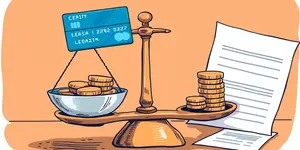
In a world where financial choices shape our future, understanding every dollar you pay is an act of empowerment.
When you request a payoff schedule, you unlock a detailed map that guides you through each step of your loan’s journey.
Whether you’re managing a mortgage for your first home or navigating student debt, clarity around interest and principal allocation can transform stress into confidence.
A payoff schedule, often called an amortization schedule, is a comprehensive table that breaks down your loan into manageable pieces. It lists every payment—typically monthly—and shows the payment amount, the interest portion, the principal reduction, and the remaining balance after each installment. With each entry, you can track the shifting balance over time and see exactly how your contributions affect the debt.
This schedule is built on the principles of amortization, where part of each payment covers interest while the rest reduces the principal. Over time, as the balance diminishes, more of your payment goes toward the principal, accelerating payoff. Studying this progression reveals the true cost of borrowing and highlights the power of extra payments.
By examining this schedule, you gain a transparent view of how lenders calculate interest and how your payments chip away at the total. Whether your loan term spans a few years or several decades, the payoff schedule paints a clear path to full repayment.
Most borrowers receive periodic statements that highlight only the current balance and next due date. These snapshots lack context, leaving you in the dark about the long-term cost. Many assume their regular payment steadily chips away at the principal, unaware that most of the early payment goes toward interest.
Requesting a payoff schedule puts you in command by revealing the total interest you will pay over the life of the loan. Armed with this insight, you can decide whether to refinance, accelerate payments, or adjust your financial plan. The schedule becomes a tool for strategic planning rather than a mere record-keeping document.
Picture a homeowner, Jane, who felt trapped by her 30-year mortgage. When she finally requested the amortization schedule, she discovered that the interest paid in the first decade exceeded the principal reduction. This revelation fueled her decision to make biweekly payments, slashing nearly five years off her term and saving thousands in interest.
Such stories underscore the transformative impact of knowledge—when you see the numbers laid bare, you can shape your repayment strategy with precision and purpose.
A typical payoff schedule arranges installments in a table, displaying each monthly commitment side by side:
By examining each column, you see the interest portion dominating early payments and the principal share growing over time. Visualizing this progression can motivate you to introduce additional contributions whenever possible.
Furthermore, many lenders provide charts or graphs alongside tables, illustrating the principal and interest lines diverging. This visual aid reinforces the impact of early and extra payments on the loan’s total cost.
When you dive into the numbers, small changes can yield substantial savings. Consider this scenario: a standard 30-year mortgage incurs $207,677 in interest over its duration. By adding $500 per month to your payment, you could shorten the loan term by a decade and reduce total interest to $113,123, saving more than $94,000.
These figures are not hypothetical—they reflect real borrower experiences when lightening the interest burden through strategic extra contributions. Even modest quarterly or annual lump sums can shift the schedule significantly, cutting years off the repayment period.
Analyzing these outcomes empowers you to set achievable goals, like diverting tax refunds, bonuses, or windfalls toward principal payments. Over time, these choices compound into meaningful interest reductions and accelerated payoff.
It’s vital to distinguish between your latest statement balance and the exact payoff amount. The payoff amount is the precise sum needed to clear the loan on a specific date. It includes the outstanding principal, interest accrued since your last payment, and any applicable fees or prepayment penalties. Without this detailed calculation, you risk underestimating the funds required to finish your loan.
By requesting an official payoff statement, you secure a guaranteed figure and avoid unwelcome surprises. With that number in hand, you can confidently plan a final lump-sum payment or structure a payoff plan that aligns with your timeline.
While mortgage schedules are the most familiar, payoff schedules are equally crucial for other loan products. Depending on your borrowing needs, you might deal with auto loans, student loans, personal installment loans, and adjustable-rate mortgages.
Each loan type has unique features: student loans may pause interest accrual during deferment, while adjustable loans shift payment structures with rate changes. Maintaining an up-to-date schedule ensures your repayment plan reflects the true cost of borrowing.
Taking action is straightforward. Follow these steps to obtain and leverage your payoff schedule:
This proactive approach turns a static document into a dynamic tool for shaping your financial destiny.
Several online applications and resources simplify payoff analysis and planning:
Many lenders also supply personalized schedules upon request, often free of charge. If you prefer expert advice, consulting a financial advisor can help tailor a plan that aligns with your broader financial objectives.
Armed with a payoff schedule, you gain complete control of your borrowing and set a clear course toward debt freedom. Regularly reviewing this document allows you to identify ways to accelerate principal reduction, minimize total interest costs, compare refinancing options effectively, and plan for major life milestones with confidence.
Ultimately, requesting a payoff schedule is an investment in your peace of mind, ensuring you never pay more than necessary and keeping you accountable to your financial goals.
Requesting a payoff schedule transforms loan repayment from a black box into a transparent, manageable plan. With full visibility of payment breakdowns, total interest, and payoff amounts, you can optimize your strategy, save thousands, and stride confidently toward financial independence.
Don’t wait—ask your lender for that schedule today, harness its insights, and take the first step in reclaiming control of your finances. Your future self will thank you for the clarity and savings you achieve.
References













